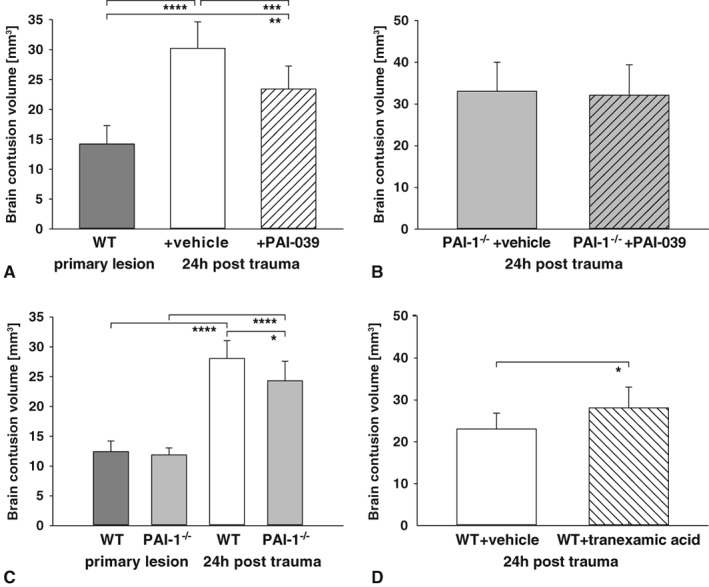Figure 2.

(A) To determine the role of plasminogen activator inhibitor‐1 (PAI‐1), the specific small molecule PAI‐039 (1 mg/kg) was applied to pharmacologically block PAI‐1–mediated impairment of fibrinolysis. Treatment reduced secondary lesion volume at 24 hours postinsult compared to vehicle (PAI‐039, n = 9; vehicle, n = 8; primary lesion, n = 7). One‐way analysis of variance (ANOVA) was used with post hoc Holm–Šidák comparisons test. (B) To determine the specificity, PAI‐039 was administered to PAI‐1–deficient animals. In these mice, no difference was present between PAI‐039 and vehicle (n = 6 each). Welch t test was used. (C) As prove of principle, wild‐type (WT) or PAI‐1 knockout (PAI‐1−/−) animals were randomized to controlled cortical impact. Secondary lesion volume at 24 hours was significantly less in PAI‐1−/− compared to control (PAI‐1−/− and WT, n = 9; primary lesion, n = 7 each). One‐way ANOVA was used with post hoc Holm–Šidák comparisons test. (D) Inhibition of fibrinolysis by the antifibrinolytic drug tranexamic acid enhanced brain damage after trauma. The lesion size increased about 25% compared with vehicle (n = 7 each). Welch t test was used. *p < 0.05, **p < 0.01, ***p < 0.001, ****p < 0.0001. Data are presented as mean ± standard deviation.
